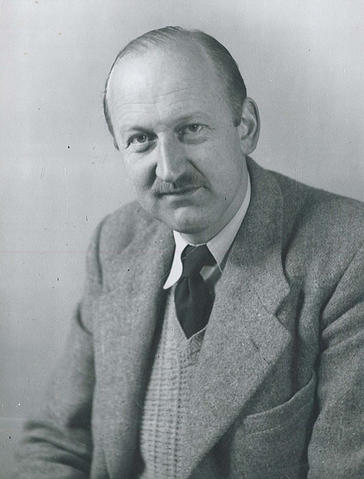
Identity area
Reference code
Title
Date(s)
Level of description
Item
Extent and medium
Context area
Name of creator
Biographical history
Horace Newton Barber (1914-1971), botanist and geneticist, was born on 26 May 1914 at Warburton, Cheshire, England, son of Horace Maximilian Barber, printer's traveller, and his wife Mary, née Newton. Educated at the County High School for Boys, Altrincham, and Manchester Grammar School, Newton read the natural science tripos at Emmanuel College, Cambridge (B.A., 1936; M.A., 1944; Sc.D., 1963). Supervised by C. D. Darlington, in 1936-40 Barber carried out research on plant and animal cytology at the John Innes Horticultural Institution, Merton, Surrey, for which he was awarded a Ph.D. by the University of London in 1942. In February 1941 he had joined the irregular army of applied scientists at the Ministry of Aircraft Production's telecommunications research establishment. He later served as a flight lieutenant with the Royal Air Force Volunteer Reserve in the Mediterranean and South East Asia, and wrote an irreverent account of his wartime adventures in air force jargon for his family.
A lecturer in botany at the University of Sydney from March 1946, Barber married a fellow lecturer Nancy Patricia O'Grady at St Mary's Catholic Cathedral on 20 April that year. In 1947 he was appointed foundation professor of botany at the University of Tasmania and extracted from a surprised administration the basic requirements of 'glasshouses, an experimental garden and a gardener'. Enthusiastic and dedicated, he believed that the 'business of a professor is to teach his students' and did much to encourage high standards of biological instruction. His interest in undergraduates extended to a strong record of overseeing postgraduates, a number of whom went on to contribute as academics and research scientists to genetics and plant breeding.
Barber quickly applied his pre-war interests in cytology and genetics to Australian plants and animals. His curiosity in natural history and his more formal disciplinary interests led to a spread of publication in experimental cytology, taxonomy, physiological and selection genetics (particularly in Eucalyptus), in ecology and forestry, and in biogeography, palaeobotany and mycology. He travelled widely in the bush and, with the eye and ear of the trained observer, took every opportunity (both as raconteur and writer) to recreate the atmosphere, mood and even redolence of those journeys.
Dean of science (1951-55), Barber returned to Hobart after a year as a Rockefeller fellow (1953-54) at the California Institute of Technology, United States of America, to be plunged into the controversy over the dismissal of Professor Sydney Orr. In an anomalous position as chairman of the staff association (from 1955) and of the professorial board (1956-59), he served on Miss Kemp's and the vice-chancellor's committees of inquiry. A regular spokesman for the university council, he was elected to the Tasmanian Club.
His formal contributions to biological science had been acknowledged by his election as a fellow of the Australian Academy of Science (1958) and of the Royal Society, London (1963), and by his appointment as a trustee of the Australian Museum (1964). Barber's peregrinating and frequently informal contributions to academic discourse and scholarship were widely appreciated by colleagues, among whom he had the reputation of originating more ideas than any other botanist in Australia.
Immediate source of acquisition or transfer
Content and structure area
Scope and content
A photograph of Professor Horace Newton Barber (date unknown, Department of Botany 1947-1963.
Appraisal, destruction and scheduling
Accruals
System of arrangement
Conditions of access and use area
Conditions governing access
Conditions governing reproduction
Language of material
Script of material
Language and script notes
Physical characteristics and technical requirements
Finding aids
Existence and location of originals
Existence and location of copies
Related units of description
Alternative identifier(s)
Access points
Subject access points
Place access points
Name access points
Genre access points
Description identifier
Institution identifier
Rules and/or conventions used
Status
Level of detail
Dates of creation revision deletion
Language(s)
Script(s)
Sources
Digital object metadata
Latitude
Longitude
Media type
Image
Mime-type
image/jpeg

